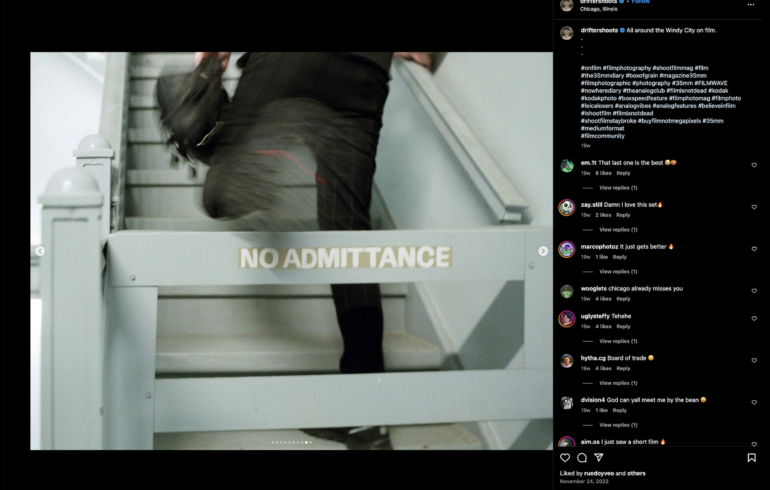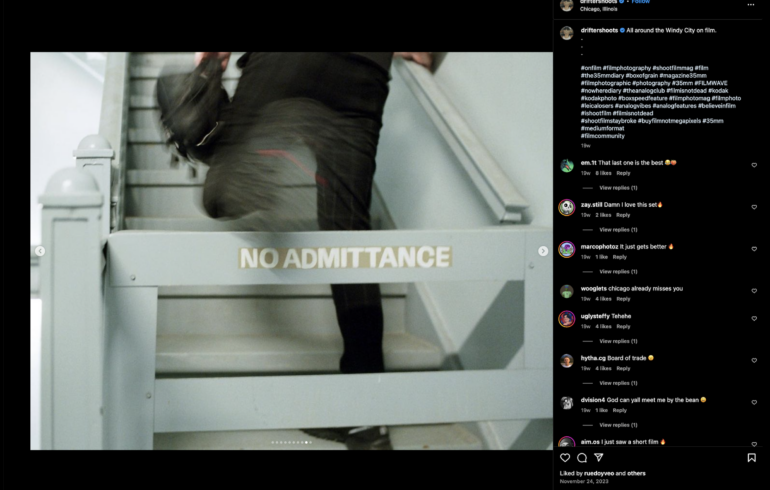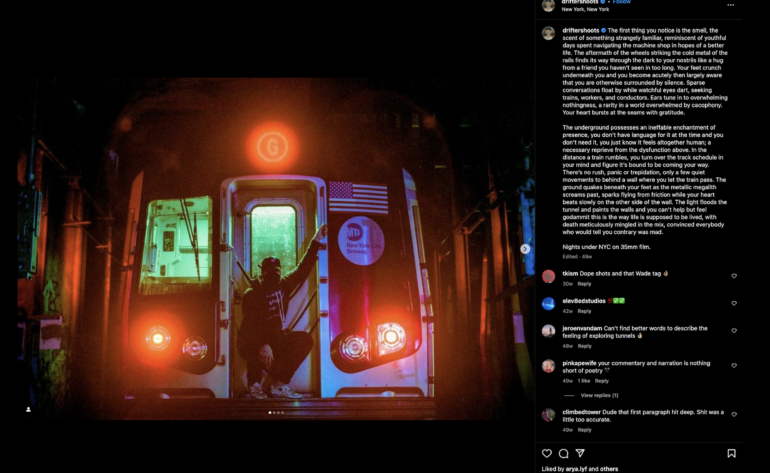
At the upcoming AIPAD show, the Robert Mann Gallery in NYC will debut some work from Isaac Wright — otherwise known as Drift. The gallery is known for representing some incredible fine art photographers who intersect into various genres of photography. But now, they’re presenting Drift’s work in a very unconventional change with the types of photographers whom they’ve come to show. The move is a controversial one in several curious ways.
Who is Drift?

According to the Cincinnati Explorer, Isaac Wright (Drift) is a former US Army service member who has served time in jail. Wright had a warrant for his arrest after doing the urbex work that he’s done, knew it, and kept doing it. Reports state that Isaac used it to cope with his trauma. Wright got out of jail, and the judge showed mercy to him by stating that he had to complete a program to have the charges lifted. Isaac completed the program and continued shooting what the judge called “beautiful art.” By November of 2021, he had sold 6 million dollars in NFTs of his images.
Rolling Stone states, “Wright began donating 15 percent of the money from his NFT sales to bail-reform causes, specifically targeting Hamilton County, Ohio, where he is from.”
His work also earned him a write-up on Time Magazine’s website.
Drift is a creator who gained fame through Instagram using the attention economy. He’s been hired for commercial photography shoots before, but he’s mostly known for his exciting work around trespassing and putting his life on the line. The images he spreads show views from places that most people don’t have access to because they lack the training. But Wright possesses that training from the military.
“You can say that my work has blurred legal lines in regards to trespassing, but breaking and entering, burglary? No,” he said while still in jail. “I did not break into the building.”
Cincinnati Explorer
Using photography as an art form to cope isn’t unique to Wright. We’ve interviewed several photographers who aren’t part of the military anymore who are behind the camera. Here’s a list:
None of these photographers are known for their urbex work. However, they all use art as a form of therapy.
Now, Drift is being represented by the Robert Mann Gallery here in NYC, and his work will be showcased at the upcoming AIPAD show.
The Blurred Lines of an Artist and an Influencer
Lots of photographers have used the Urbex style that Drift is famous for. However, some have also died for it. In 2016, the photographer Heavy Minds was killed while riding atop the F-Train. In 2017, a photographer fell from the Loop Hotel trying to do this genre of photography. Another died in 2018 in Philly trying to also do urbex photography. Typically, we wouldn’t even bother covering this if it weren’t for the ethics involved, as we actively do not condone trespassing on property.

If it’s okay for one photographer, what’s stopping it from influencing other budding creators to pick up a camera and do it too?
Drift has surely done some illegal things. In one Instagram post, he’s shown on the G Train outside in a way that’s not legal, according to MTA’s website. The question then becomes this: we, as a society, don’t condone when teenagers do it, and we often think it’s quite stupid to risk your life like this. So why is it alright in the case of Drift?
However, this isn’t unheard of if we look at other art mediums. Banksy, the famous street artist, is sometimes commissioned and, at other times, not at all. He doesn’t make money from his work, apparently. But if his work is found on the side of a building, the building’s value goes up a lot because of who he is as an artist. Banksy, too, has done illegal things when it comes to trespassing and such. However, it doesn’t seem like he risked his life for the work. It also is looked at quite differently by those who he’s legally wronged.
This is far different from other artists like those in the Bushwick Collective, who are actively commissioned to make art; and only then do they make the murals they do.
S
In 2018, we received a pitch about a photographer similar to Drift. It read:
We recently started working with a company called Trov, they’re an on-demand insurance platform that allows you insure your gear on your terms. They’re currently live in the UK but US is coming.
They recently introduced an ambassador program called the UNTETHERED with 18 members in the US, including a photographer named Trashhand. Trash is based in Chicago and his claim to fame is breaking into places around the city to capture views no one else can. We also recently had him out to London to do the same thing.
Should brands truly be representing or endorsing photographers who do illegal things to get their images? In some cases, society applauds the work that’s done, such as with Banksy and his street art. In other cases, it’s seen as something to just garner attention. Perhaps the answer, therefore, lies with intent.
Banksy does work clearly for self-expression and eventually earns a lot of credibility in the art world for his clever messaging about life. It’s not based on the attention economy. He just makes art that’s then sold. Drift, on the other hand, does it to pander to the attention economy. This is what influencers do. If Drift had died on the G-train tracks, an investigation would’ve occurred, and the livelihoods of many people in NYC would’ve been affected for an entire day. Whenever people die on the tracks, the entire system shifts, and it ruins the routines of those living and working in New York.
Should influencers who aren’t career-long photographers with an interest in art first-and-foremost be given representation in the art world?
We reached out to Robert Mann Gallery for quotes, but did not hear back from them.






